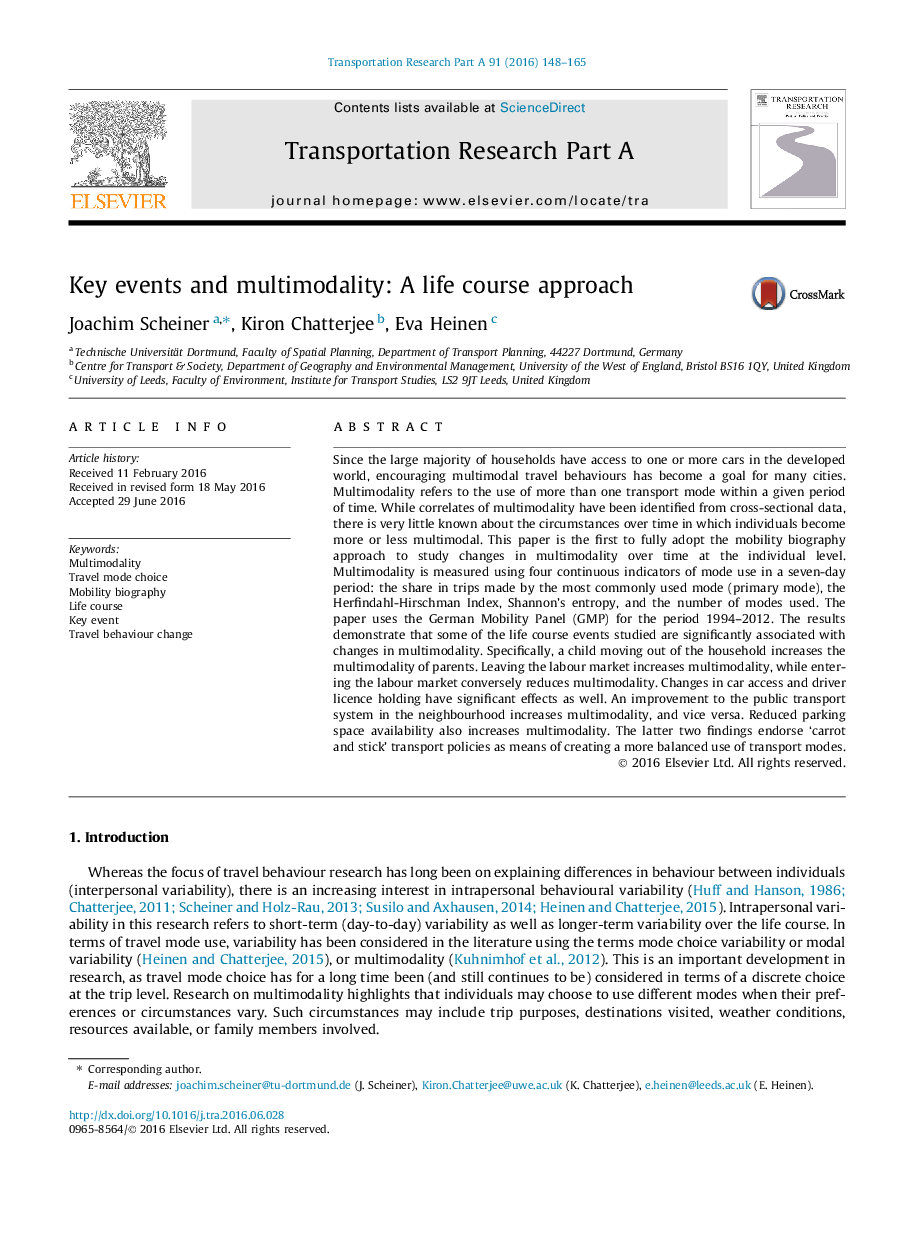| کد مقاله | کد نشریه | سال انتشار | مقاله انگلیسی | نسخه تمام متن |
|---|---|---|---|---|
| 310373 | 533081 | 2016 | 18 صفحه PDF | دانلود رایگان |
• The paper studies intra-individual changes in multimodality from one year to the next.
• Multimodality is measured using four continuous indicators of mode use.
• Some life course events are significantly associated with changes in multimodality.
• Improving public transport and reducing parking space availability increases multimodality.
• The findings indicate opportunities to encourage more diverse mode use.
Since the large majority of households have access to one or more cars in the developed world, encouraging multimodal travel behaviours has become a goal for many cities. Multimodality refers to the use of more than one transport mode within a given period of time. While correlates of multimodality have been identified from cross-sectional data, there is very little known about the circumstances over time in which individuals become more or less multimodal. This paper is the first to fully adopt the mobility biography approach to study changes in multimodality over time at the individual level. Multimodality is measured using four continuous indicators of mode use in a seven-day period: the share in trips made by the most commonly used mode (primary mode), the Herfindahl-Hirschman Index, Shannon’s entropy, and the number of modes used. The paper uses the German Mobility Panel (GMP) for the period 1994–2012. The results demonstrate that some of the life course events studied are significantly associated with changes in multimodality. Specifically, a child moving out of the household increases the multimodality of parents. Leaving the labour market increases multimodality, while entering the labour market conversely reduces multimodality. Changes in car access and driver licence holding have significant effects as well. An improvement to the public transport system in the neighbourhood increases multimodality, and vice versa. Reduced parking space availability also increases multimodality. The latter two findings endorse ‘carrot and stick’ transport policies as means of creating a more balanced use of transport modes.
Journal: Transportation Research Part A: Policy and Practice - Volume 91, September 2016, Pages 148–165
